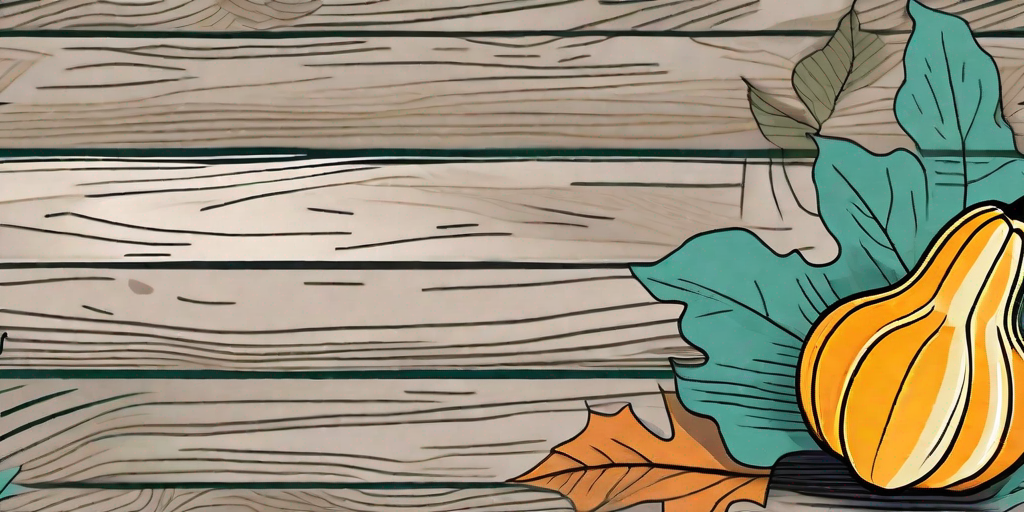
Acorn squash, a delightful autumnal treat, is not just a pretty face. Its sweet, nutty flavor and versatile nature make it a star in the kitchen. But how do you know when this green-skinned beauty is ripe and ready to eat? Let's embark on a journey to discover the secrets of acorn squash, from identifying its ripeness to cooking it to perfection.
Understanding Acorn Squash
Before we dive into the nitty-gritty of acorn squash ripeness, let's take a moment to appreciate this vegetable's charm. Acorn squash, also known as Des Moines squash or pepper squash, is a winter squash with distinctive longitudinal ridges and sweet, yellow-orange flesh. It's a member of the Cucurbitaceae family, which includes cucumbers, melons, and pumpkins.
Acorn squash is rich in vitamins, minerals, and fiber, making it a nutritious addition to your diet. It's also incredibly versatile in the kitchen, lending itself well to both sweet and savory dishes. Now that we've established why you should be including acorn squash in your culinary repertoire, let's move on to the main event: determining its ripeness.
Identifying a Ripe Acorn Squash
Color
The color of an acorn squash can tell you a lot about its ripeness. A ripe acorn squash is typically a deep, dark green color. However, it's not uncommon for it to have patches of orange or yellow. These patches are not a sign of overripeness, but rather, a natural part of the squash's maturation process.
While color is a good indicator of ripeness, it's not foolproof. Some varieties of acorn squash, such as the 'Table Queen' and 'Golden Acorn', may have different color patterns. Therefore, it's important to consider other factors as well.
Texture
Another way to tell if an acorn squash is ripe is by its texture. A ripe acorn squash should have a hard, smooth skin. If you can easily pierce the skin with your fingernail, the squash is likely not ripe yet.
On the other hand, if the skin is wrinkled or soft, the squash may be overripe. Overripe squash can still be eaten, but they may have a less desirable texture and flavor.
Weight
When it comes to acorn squash, weight matters. A ripe acorn squash should feel heavy for its size. This is because a ripe squash is full of moisture, which contributes to its weight. If the squash feels light, it may be underripe or dehydrated.
Remember, these are general guidelines and may not apply to every acorn squash. When in doubt, it's always best to ask a knowledgeable produce manager or farmer.
Storing and Preparing Acorn Squash
Storage
Once you've picked a ripe acorn squash, proper storage is key to maintaining its freshness. Acorn squash should be stored in a cool, dry place, such as a pantry or cellar. Avoid storing it in the refrigerator, as the cold temperature can cause the squash to become mushy and lose its flavor.
When stored properly, acorn squash can last for several months. However, once cut, it should be wrapped in plastic and stored in the refrigerator, where it will keep for about a week.
Preparation
Preparing acorn squash is a breeze. Simply cut the squash in half lengthwise, scoop out the seeds, and it's ready to be cooked. You can roast it, steam it, or even microwave it. The skin is also edible, so there's no need to peel it unless you prefer to.
Acorn squash pairs well with a variety of flavors, from sweet cinnamon and brown sugar to savory garlic and herbs. So don't be afraid to get creative in the kitchen!
FAQs about Acorn Squash
-
Can I eat acorn squash raw? While acorn squash can be eaten raw, it's typically cooked to bring out its sweet, nutty flavor.
-
What does acorn squash taste like? Acorn squash has a sweet, slightly nutty flavor. It's less sweet than butternut squash and has a creamier texture.
-
Can I use acorn squash in place of other winter squash? Yes, acorn squash can be used in recipes that call for other winter squash, such as butternut or pumpkin. However, keep in mind that the flavor and texture may vary slightly.
There you have it, a comprehensive guide to falling in love with acorn squash. From identifying its ripeness to cooking it to perfection, we've covered it all. So next time you're at the grocery store or farmer's market, don't pass by the acorn squash. Give it a try and you might just find your new favorite vegetable.











